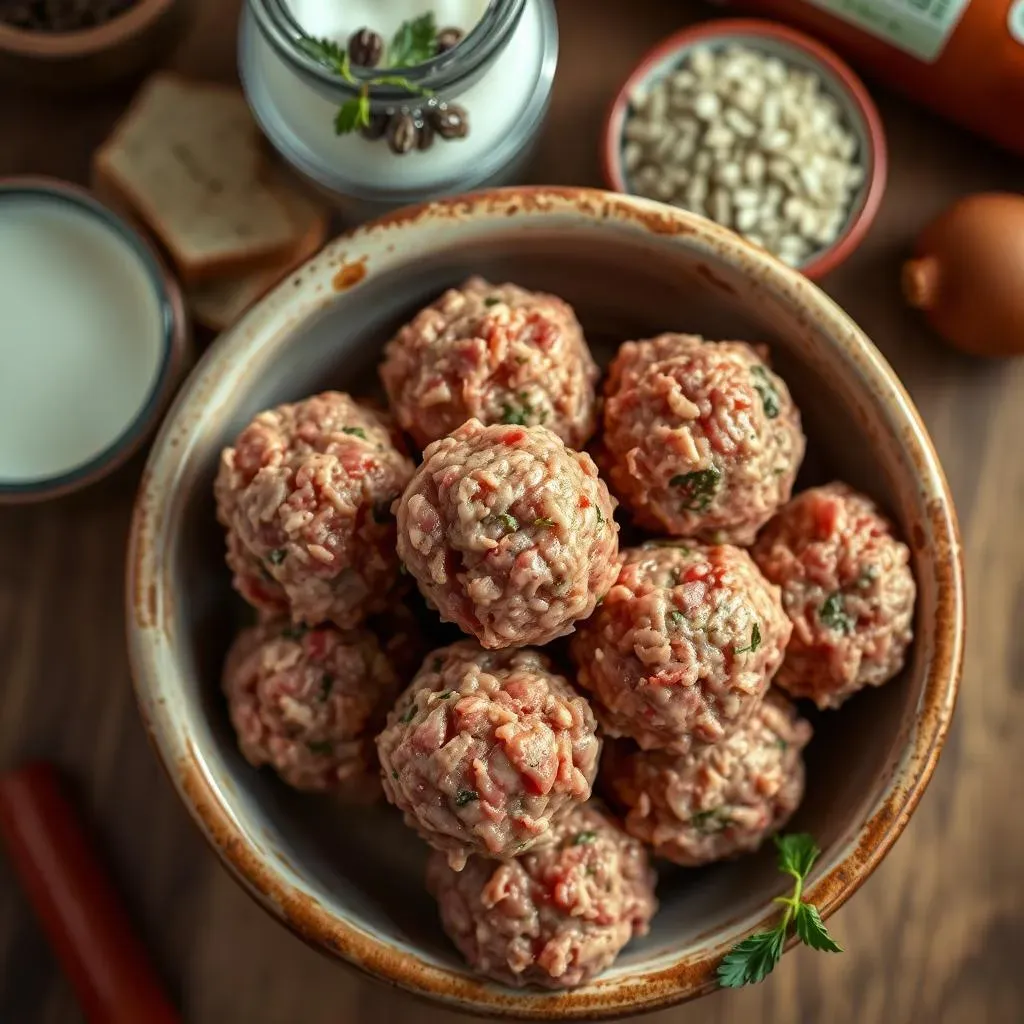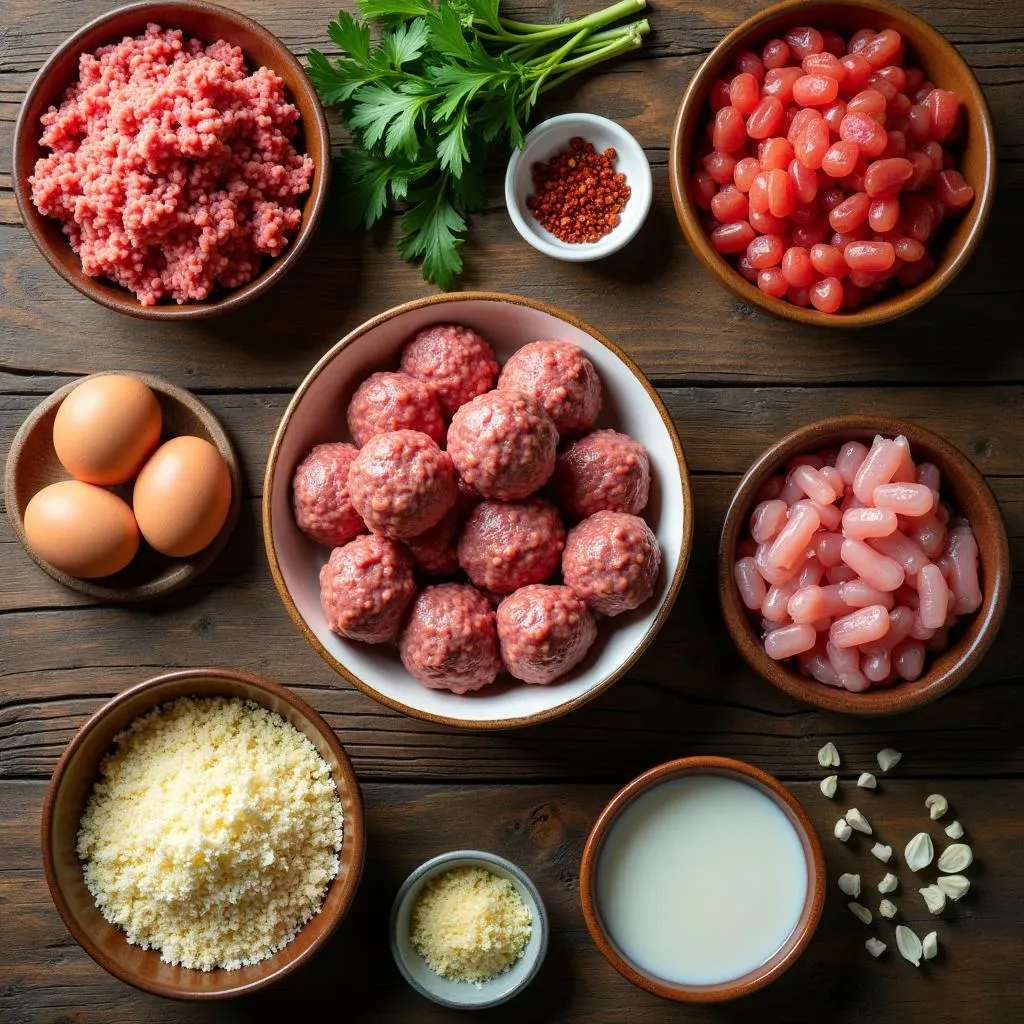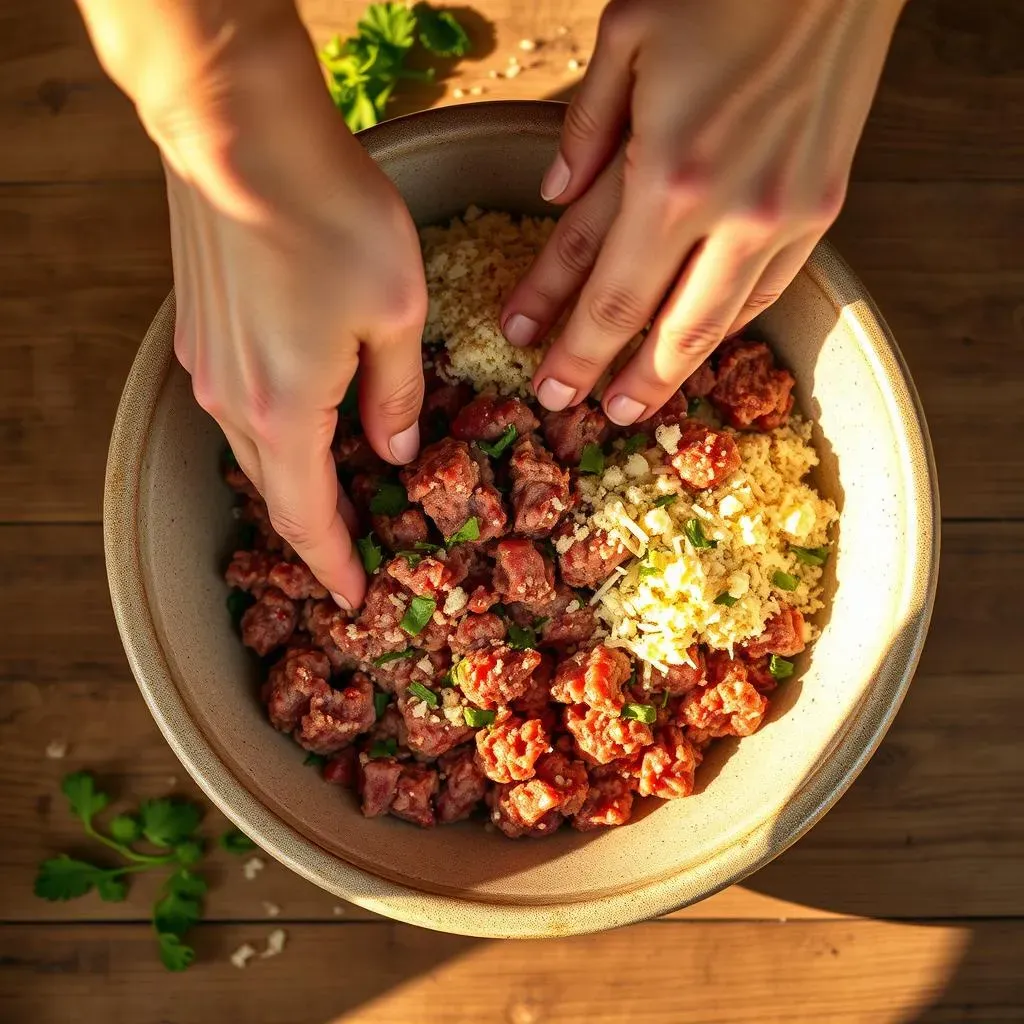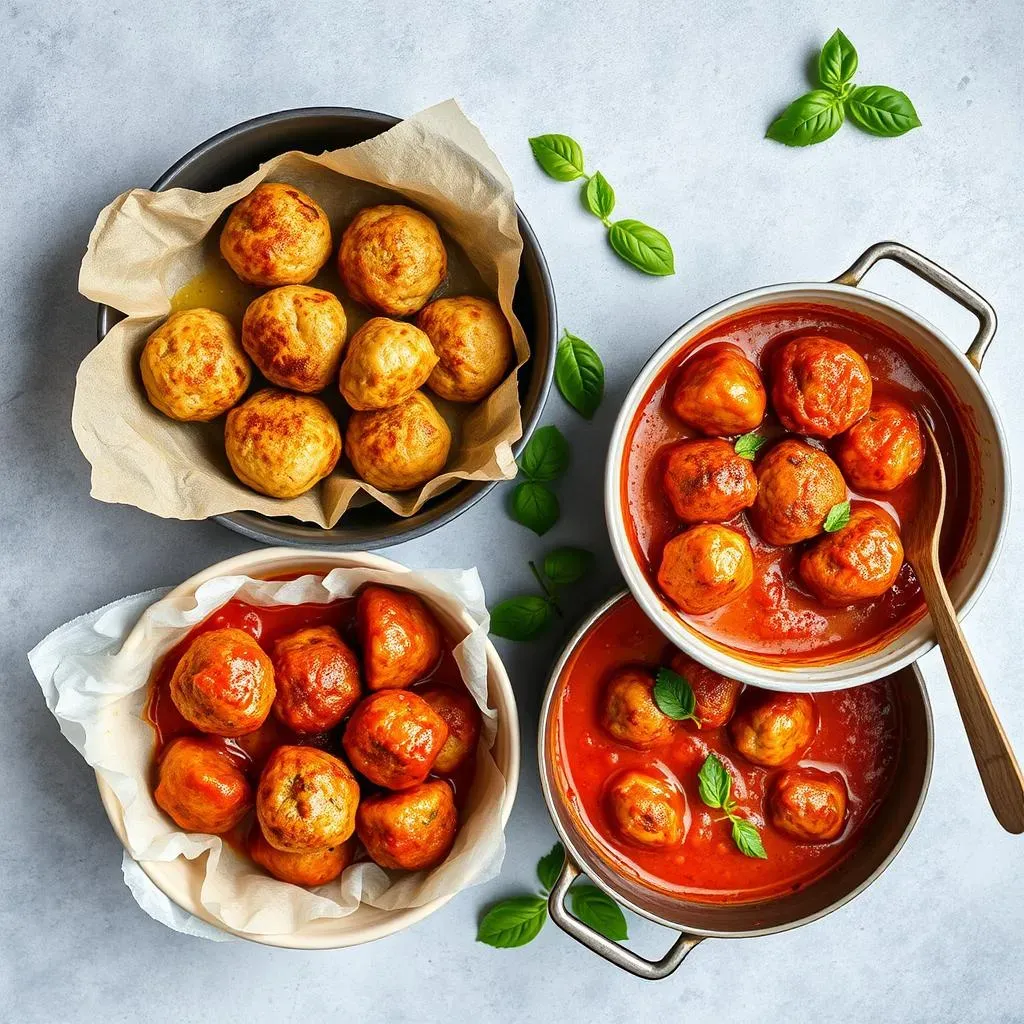Table of Contents
Is there anything more comforting than a plate of spaghetti topped with rich, savory meatballs? If you've been searching for that perfect, melt-in-your-mouth experience, look no further. This article is your ultimate guide to creating the best **homemade Italian meatball recipe** you've ever tasted. We're not just talking about throwing some ground beef and breadcrumbs together; we're diving deep into the secrets of authentic Italian flavor, tender textures, and cooking techniques that will elevate your meatball game to a whole new level. From selecting the right blend of meats and mastering the art of breadcrumb saturation to choosing the perfect cooking method for your desired outcome, we'll cover every aspect of crafting these culinary gems. Whether you prefer baking, frying, or simmering your meatballs in a luscious tomato sauce, we've got you covered. Get ready to roll up your sleeves and embark on a delicious journey to meatball perfection. This isn't just a recipe; it's a tradition, a flavor explosion, and a guaranteed crowd-pleaser. Let's get cooking!
The Secret to Authentic Homemade Italian Meatballs

The Secret to Authentic Homemade Italian Meatballs
The Meat Matters: Choosing Your Blend
let's get real. The secret to truly amazing Italian meatballs starts way before you even think about breadcrumbs or sauce. It's all about the meat, baby! Forget that pre-packaged "ground beef" at the supermarket. We're aiming for a flavor explosion, and that means a strategic blend. My nonna always swore by a mix of ground beef, pork, and veal. The beef gives you that classic meatball flavor, the pork adds richness and moisture, and the veal brings a delicate tenderness that's just… *chef's kiss*.
If you can't find veal, or you're looking for a more budget-friendly option, don't sweat it. A combination of ground beef and Italian sausage (removed from its casing) works wonders. Just make sure you're using a good quality sausage with plenty of fennel and other Italian spices. And hey, if you're feeling adventurous, try adding a little ground lamb to the mix! It'll give your meatballs a unique, slightly gamey flavor that's totally addictive. The key is to experiment and find what you love.
The Breadcrumb Breakdown: Moisture is Key
Now, let's talk breadcrumbs. This is where a lot of people go wrong. Dry, crunchy breadcrumbs are the enemy of tender meatballs. We want soft, moist breadcrumbs that will help bind the meat together and create a light, airy texture. The trick? Milk! Soak your breadcrumbs in milk (or even better, a mixture of milk and cream) for at least 15 minutes before adding them to the meat mixture. This will ensure that they're fully saturated and ready to work their magic.
You can use store-bought breadcrumbs, but for the ultimate flavor boost, I highly recommend making your own. Simply pulse some stale Italian bread in a food processor until it's finely ground. Then, toast the breadcrumbs in a dry skillet until they're lightly golden brown. This will add a nutty, toasted flavor that will take your meatballs to the next level. Trust me, it's worth the extra effort.
Ingredients for the Perfect Homemade Italian Meatball Recipe

Ingredients for the Perfect Homemade Italian Meatball Recipe
The Meat Selection: Building Flavor and Texture
Alright, let's break down exactly what you need to nail this **homemade Italian meatball recipe**. First up, the meat! As we talked about, a blend is best. Aim for equal parts ground beef (chuck is great for flavor), ground pork (for that juicy richness), and ground veal (if you can find it, for tenderness). If veal's a no-go, just bump up the beef and pork a bit. Remember, quality matters! Splurge on the good stuff; you'll taste the difference.
Don't be afraid to experiment with ratios. A little more pork will make them extra succulent, while more beef will give them a heartier flavor. Also, if you are using Italian sausage, be sure to account for the extra spices and salt it will add.
The Binder Brigade: Breadcrumbs, Eggs, and Cheese
Next, you'll need your "binder brigade": breadcrumbs, eggs, and cheese. For the breadcrumbs, go for Italian-style breadcrumbs, or make your own by pulsing stale Italian bread in a food processor. Soak them in milk or cream to soften them up – this is crucial for keeping the meatballs moist. Eggs are essential for binding everything together, and a generous grating of Parmesan cheese adds a salty, savory kick that's just irresistible. Pecorino Romano cheese can also be used for a sharper, saltier flavor.
Also, consider adding some fresh parsley, minced garlic, and your favorite Italian seasonings to the mix. A pinch of red pepper flakes can add a touch of heat, if you're into that sort of thing. Don't be afraid to get creative and customize the flavors to your liking.
Ingredient | Quantity | Notes |
|---|---|---|
Ground Beef | 1 pound | Chuck is recommended |
Ground Pork | 1 pound | Adds richness and moisture |
Ground Veal (optional) | 1 pound | For extra tenderness |
Italian Breadcrumbs | 1 cup | Soaked in milk or cream |
Eggs | 2 large | Binder |
Parmesan Cheese | 1/2 cup | Grated, for flavor |
StepbyStep: Crafting Your Homemade Italian Meatballs

StepbyStep: Crafting Your Homemade Italian Meatballs
Mixing Like a Pro: Combining Ingredients
Alright, future meatball maestros, let's get down to business! First, gently combine your ground meats in a large bowl. Don't overmix! Overworking the meat will result in tough meatballs, and nobody wants that. Think of it as a gentle massage, not a wrestling match. Next, add your soaked breadcrumbs, eggs, Parmesan cheese, minced garlic, chopped parsley, and any other seasonings you're using.
Now, here's a pro tip: use your hands! It's the best way to ensure that everything is evenly distributed. Just make sure your hands are clean, or wear gloves if you prefer. Gently mix everything together until just combined. The mixture should be moist but not soggy. If it seems too wet, add a little more breadcrumbs. If it seems too dry, add a splash of milk or cream.
Rolling with Confidence: Shaping Your Meatballs
Time to roll! Grab a small amount of the meat mixture (about 2-3 tablespoons) and gently roll it between your palms to form a ball. Don't pack it too tightly! You want the meatballs to be light and airy, not dense and heavy. Aim for a uniform size so that they cook evenly. I like to use a cookie scoop to ensure that all my meatballs are the same size.
Place the rolled meatballs on a baking sheet lined with parchment paper. This will prevent them from sticking and make cleanup a breeze. If you're not planning on cooking them right away, you can cover the baking sheet with plastic wrap and refrigerate them for up to 24 hours. This will allow the flavors to meld together even more.
Step | Description | Tips |
|---|---|---|
1. Combine Meats | Gently mix ground beef, pork, and veal (optional). | Don't overmix! |
2. Add Binder Ingredients | Incorporate soaked breadcrumbs, eggs, cheese, garlic, and parsley. | Use your hands for even distribution. |
3. Roll Meatballs | Shape the mixture into uniform balls. | Don't pack too tightly; use a cookie scoop for consistency. |
Avoiding the Pitfalls: Common Mistakes to Dodge
Alright, let's talk about some common mistakes that people make when crafting their **homemade Italian meatball recipe**, and how to avoid them. First up: overmixing. I know I already mentioned it, but it's worth repeating. Overmixing leads to tough, dense meatballs. Be gentle! Another common mistake is using dry breadcrumbs. Remember, moisture is key! Soak those breadcrumbs in milk or cream before adding them to the meat mixture.
Also, don't skip the Parmesan cheese! It adds a salty, savory kick that's just irresistible. And finally, don't be afraid to experiment with seasonings. A pinch of red pepper flakes can add a touch of heat, while a little dried oregano can enhance the Italian flavor. The key is to find what you love and make it your own.
Cooking Methods: Baking, Frying, or Simmering Your Homemade Italian Meatballs

Cooking Methods: Baking, Frying, or Simmering Your Homemade Italian Meatballs
Baking: The Hands-Off Approach
Let's kick things off with baking. This is my go-to method when I'm looking for a hands-off approach. It's super easy, and it results in evenly cooked meatballs that are tender and juicy. Simply preheat your oven to 375°F (190°C), place your rolled meatballs on a baking sheet lined with parchment paper, and bake for 20-25 minutes, or until they're golden brown and cooked through. No need to flip them! Baking is also a great option if you're making a big batch of meatballs, as you can cook them all at once.
One thing to keep in mind is that baked meatballs tend to be a little less browned than fried meatballs. If you're looking for that extra bit of color and flavor, you can broil them for a minute or two at the end of the baking time. Just keep a close eye on them so they don't burn! Also, baking is the best way to cook turkey or chicken meatballs.
Frying: The Flavor Booster
Now, let's talk frying. This method requires a little more attention, but it's worth it for the extra flavor and crispy exterior. Heat a generous amount of olive oil in a large skillet over medium heat. Once the oil is hot, carefully add the meatballs to the skillet, making sure not to overcrowd it. Cook the meatballs for 8-10 minutes, turning them occasionally, until they're browned on all sides and cooked through.
Frying gives the meatballs a beautiful caramelized crust that's just irresistible. The key is to use enough oil and to not overcrowd the skillet. Overcrowding will lower the temperature of the oil and result in steamed, not fried, meatballs. Also, be sure to use a skillet with high sides to prevent the oil from splattering.
Cooking Method | Pros | Cons | Tips |
|---|---|---|---|
Baking | Hands-off, even cooking, great for large batches | Less browned than fried | Broil for a minute or two for extra color |
Frying | Extra flavor, crispy exterior | Requires more attention, can be messy | Use enough oil, don't overcrowd the skillet |
Simmering: The Sauce Infusion
Last but not least, let's talk simmering. This is the traditional Italian method, and it's perfect for infusing the meatballs with flavor from the sauce. Simply add the cooked meatballs (either baked or fried) to your favorite tomato sauce, bring to a simmer, and cook for at least 30 minutes, or up to a few hours. The longer they simmer, the more flavorful they'll become.
Simmering is a great way to tenderize the meatballs even further, and it allows the flavors of the meat and sauce to meld together beautifully. I like to use a simple tomato sauce made with crushed tomatoes, garlic, oregano, and a pinch of red pepper flakes. But feel free to use your favorite sauce recipe! Also, if you're using raw meatballs, you can add them directly to the sauce and simmer them until they're cooked through. Just be sure to stir them occasionally to prevent them from sticking to the bottom of the pot.
Serving Suggestions and Variations for the Ultimate Meatball Experience

Serving Suggestions and Variations for the Ultimate Meatball Experience
Classic Combos: Spaghetti, Subs, and More
so you've got a batch of perfectly cooked meatballs. Now what? The possibilities are endless! Let's start with the classics. Spaghetti and meatballs are a no-brainer. Serve them with your favorite tomato sauce and a generous sprinkle of Parmesan cheese. Meatball subs are another crowd-pleaser. Load them onto toasted hoagie rolls with sauce and mozzarella cheese, then bake until the cheese is melted and bubbly. You can also use your meatballs to make a hearty meatball soup, a flavorful meatball pizza, or even a simple meatball salad.
Don't be afraid to get creative! You can use your meatballs in tacos, sliders, or even as a topping for nachos. The key is to think outside the box and experiment with different flavors and textures. Also, if you have any leftover meatballs, you can freeze them for later use. They'll keep in the freezer for up to 3 months.
Global Twists: Meatballs Around the World
Want to take your meatball game to the next level? Try giving them a global twist! Swedish meatballs are a classic for a reason. Serve them with a creamy gravy and lingonberry jam. Asian-inspired meatballs are another great option. Mix ground pork with ginger, garlic, and soy sauce, then serve them with rice and stir-fried vegetables. You can also make Mexican-style meatballs by adding chili powder, cumin, and cilantro to the meat mixture, then serving them in a spicy tomato sauce.
The possibilities are endless! You can use your meatballs to explore different cuisines and flavors from around the world. Just be sure to adjust the seasonings and sauces to match the cuisine you're going for. Also, don't be afraid to experiment with different types of meat. Ground lamb, turkey, or chicken can all be used to make delicious and unique meatballs.
Serving Suggestion | Description | Tips |
|---|---|---|
Spaghetti and Meatballs | Classic Italian dish with tomato sauce and Parmesan cheese. | Use your favorite tomato sauce recipe. |
Meatball Subs | Toasted hoagie rolls with sauce and mozzarella cheese. | Bake until the cheese is melted and bubbly. |
Swedish Meatballs | Serve with creamy gravy and lingonberry jam. | A classic for a reason! |
Dietary Adaptations: Gluten-Free, Low-Carb, and More
Got dietary restrictions? No problem! You can easily adapt this **homemade Italian meatball recipe** to fit your needs. For gluten-free meatballs, simply use gluten-free breadcrumbs or almond flour in place of regular breadcrumbs. For low-carb meatballs, use crushed pork rinds or Parmesan cheese in place of breadcrumbs. You can also add some chopped vegetables, like zucchini or spinach, to the meat mixture to add extra nutrients and fiber.
Also, if you're watching your sodium intake, be sure to use low-sodium ingredients and avoid adding too much salt to the meat mixture. And if you're vegan, you can make delicious vegan meatballs using plant-based ground meat alternatives, like lentils or mushrooms. The key is to get creative and find substitutions that work for you.
Your Homemade Italian Meatball Recipe Awaits
So, there you have it – your complete guide to crafting the ultimate homemade Italian meatballs. From selecting the perfect ingredients to mastering the cooking techniques, you're now equipped to create a dish that will impress family and friends alike. Don't be afraid to experiment with variations and serving suggestions to truly make this recipe your own. Remember, the best cooking comes from the heart, so pour in the love, and enjoy the delicious results of your labor. Happy cooking!